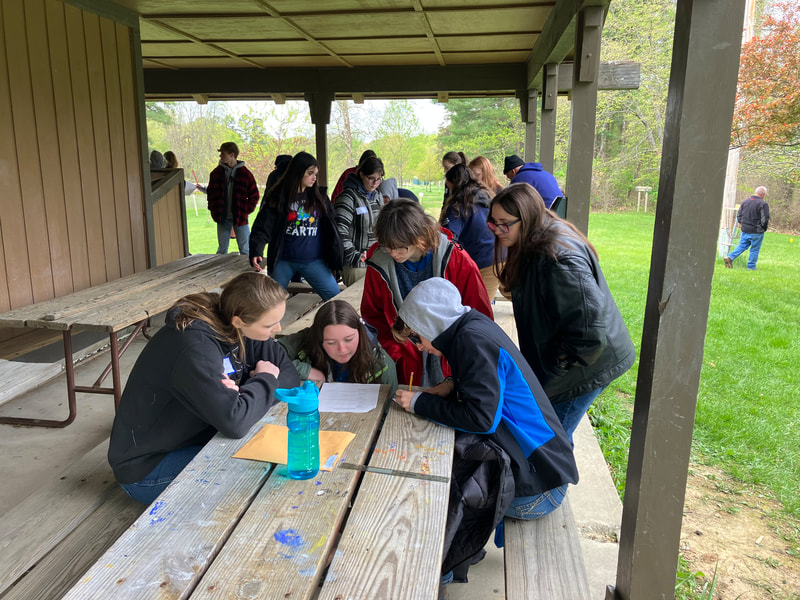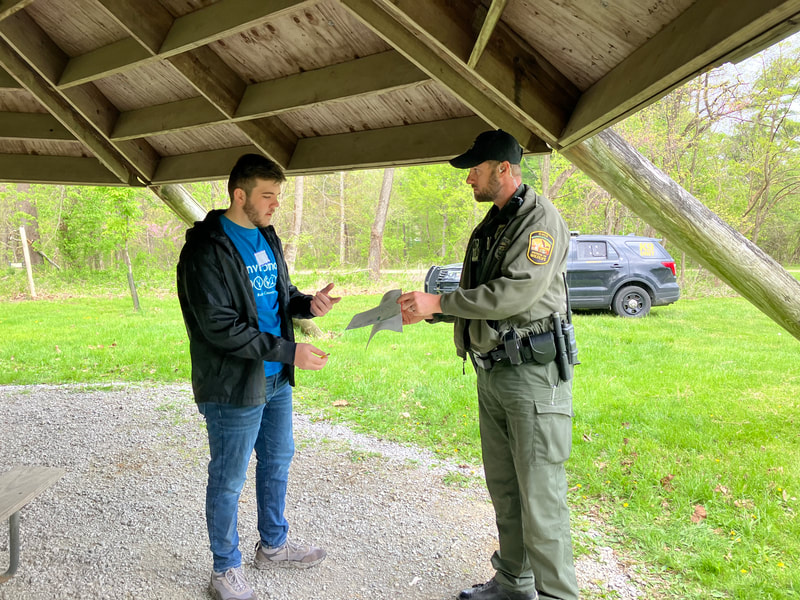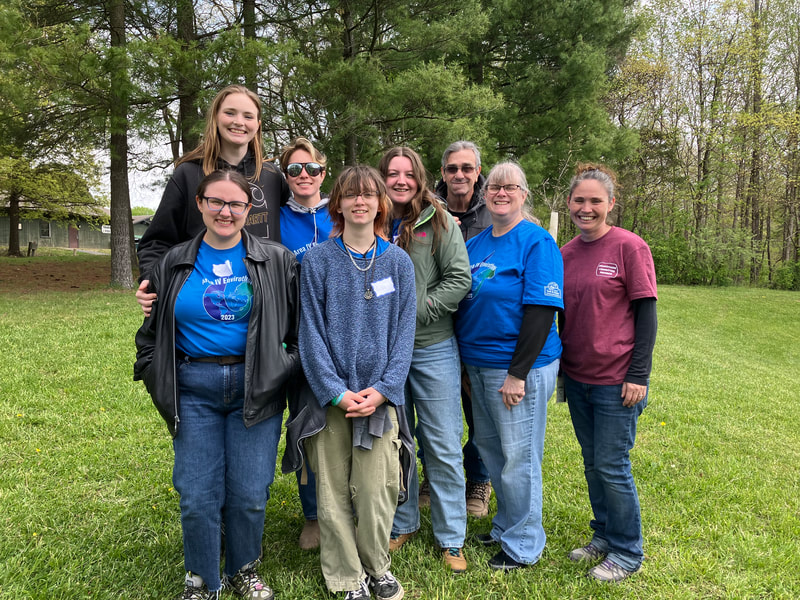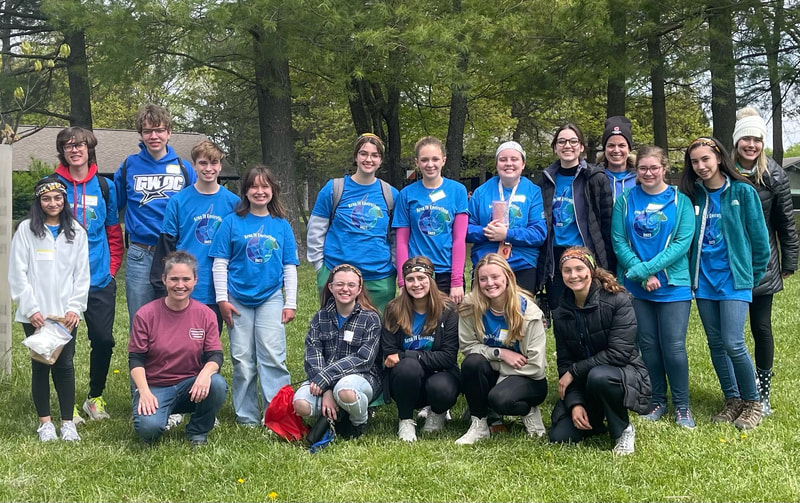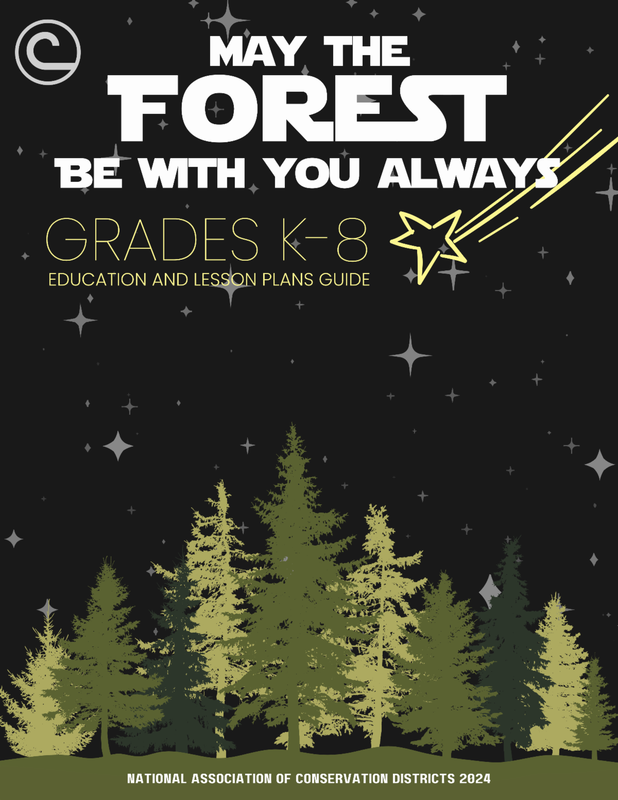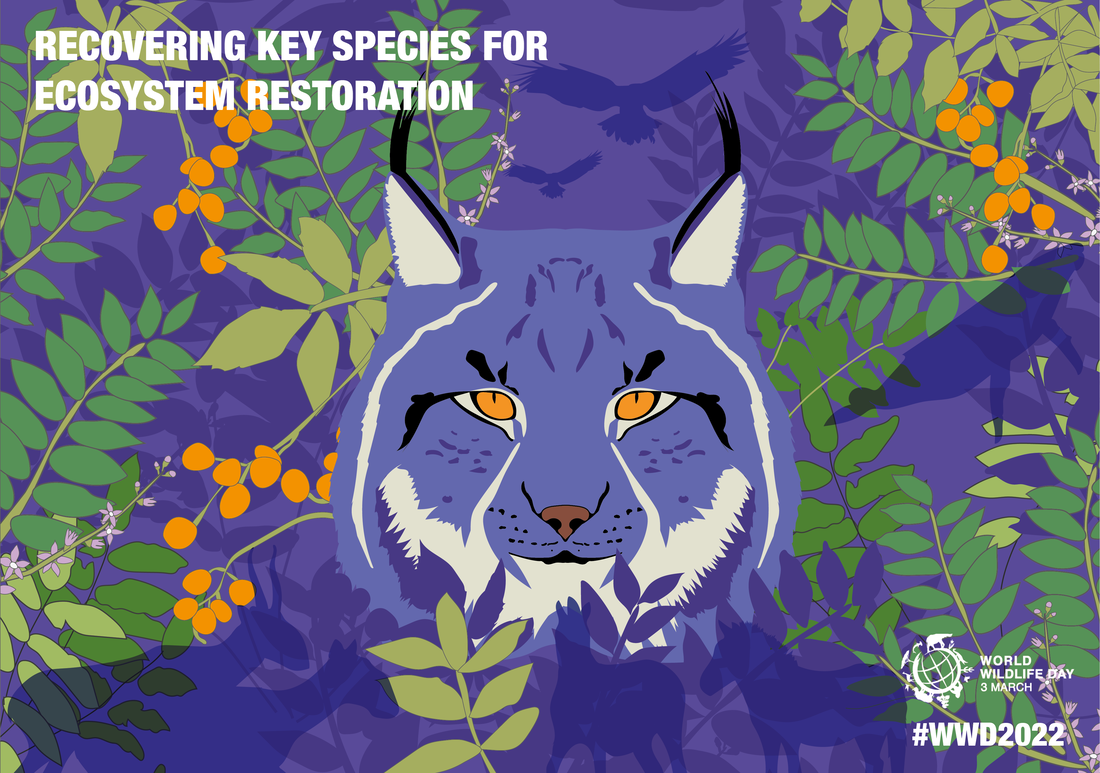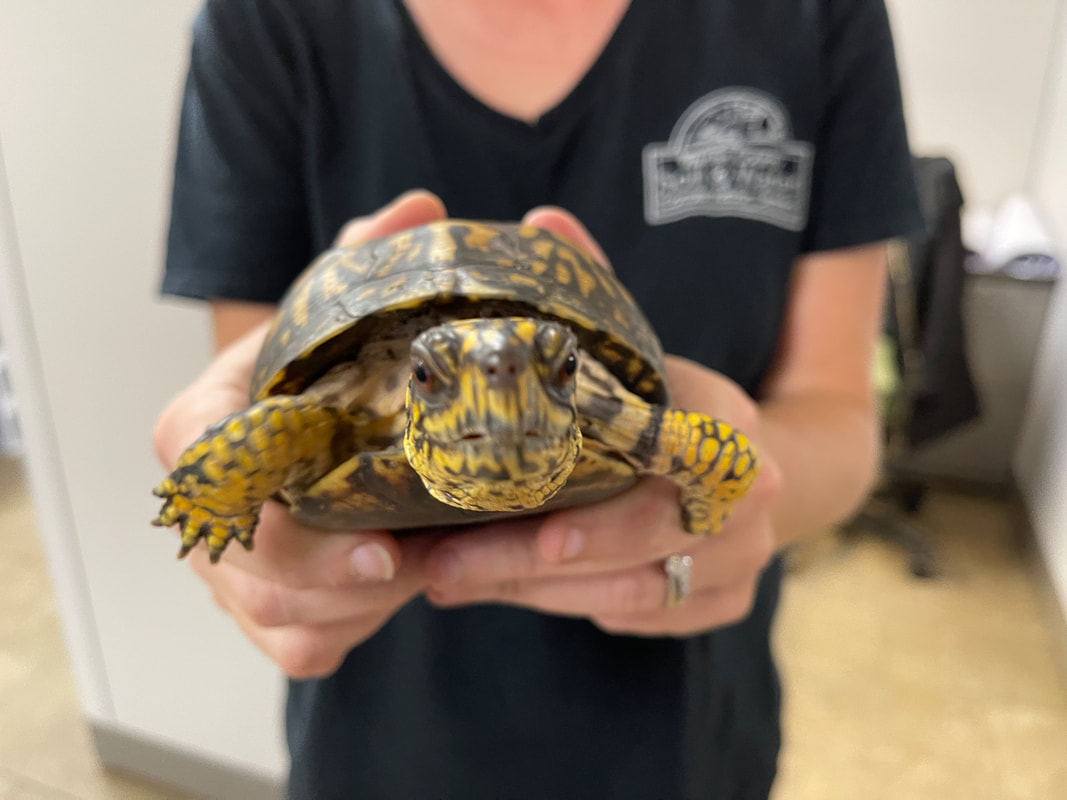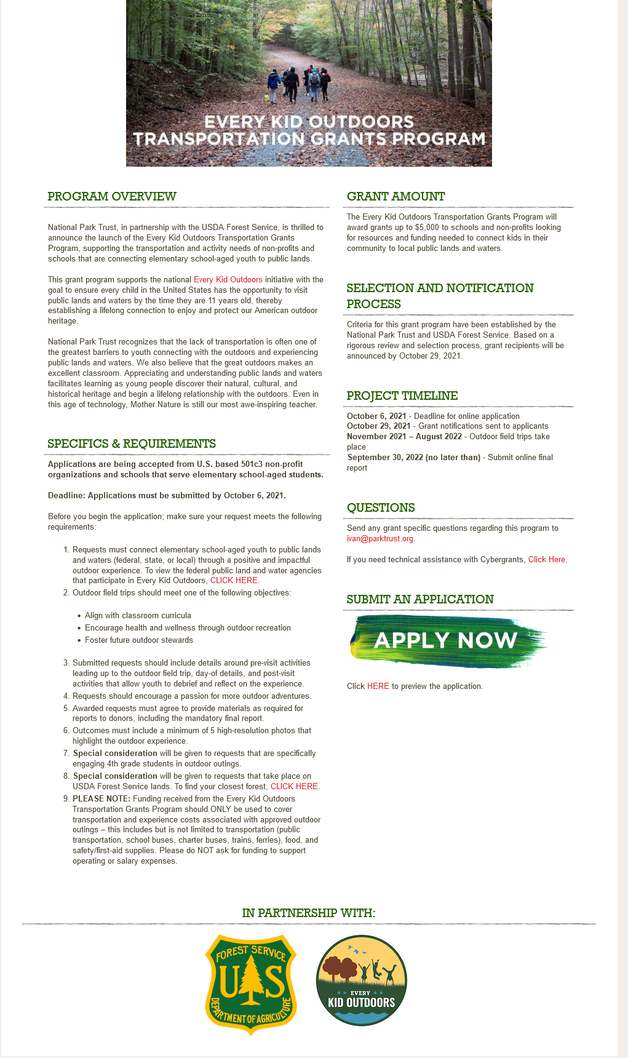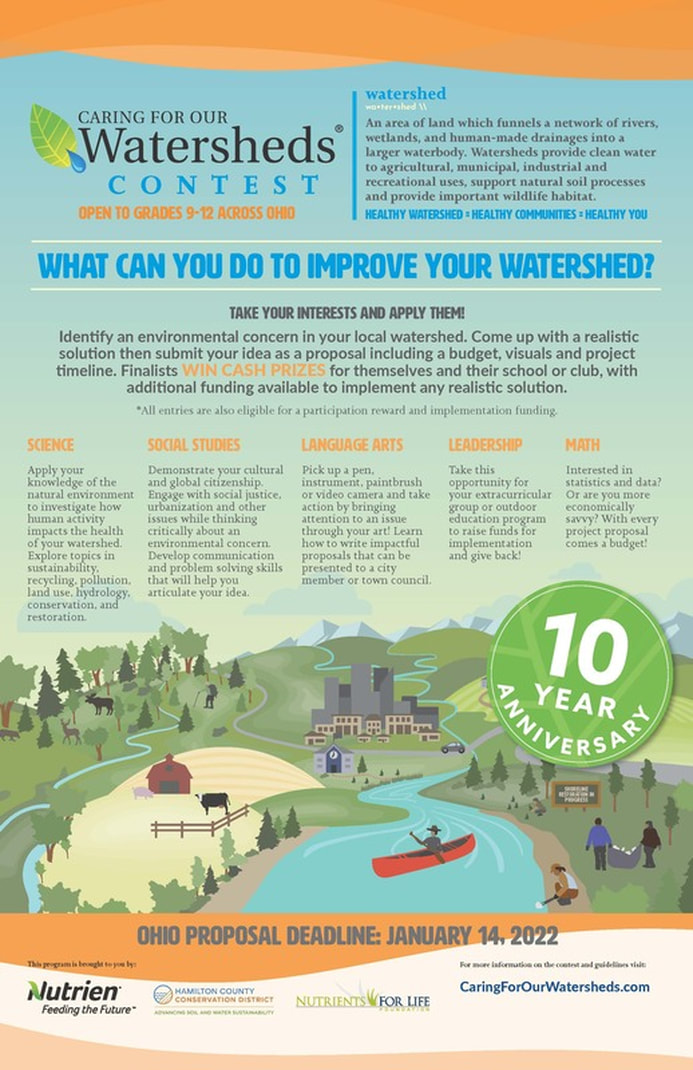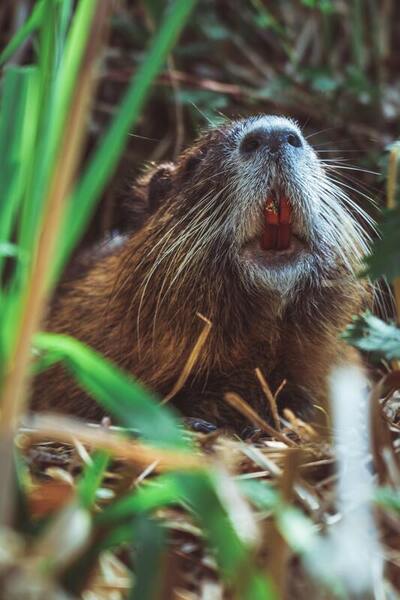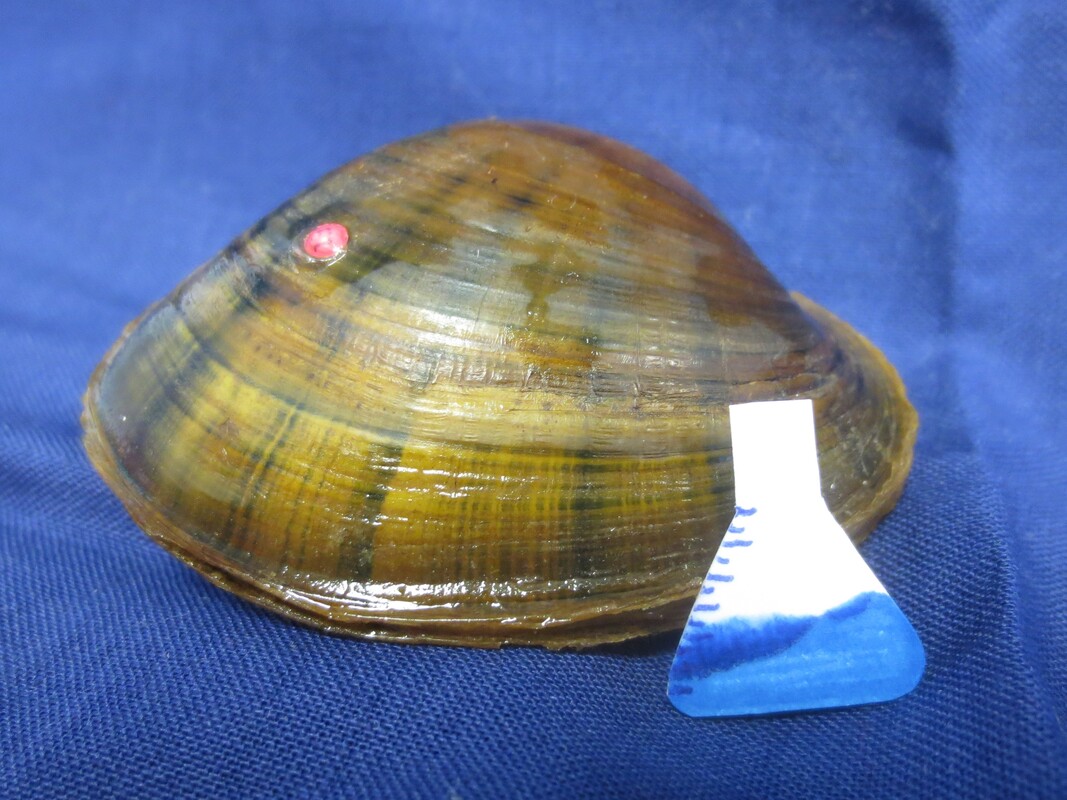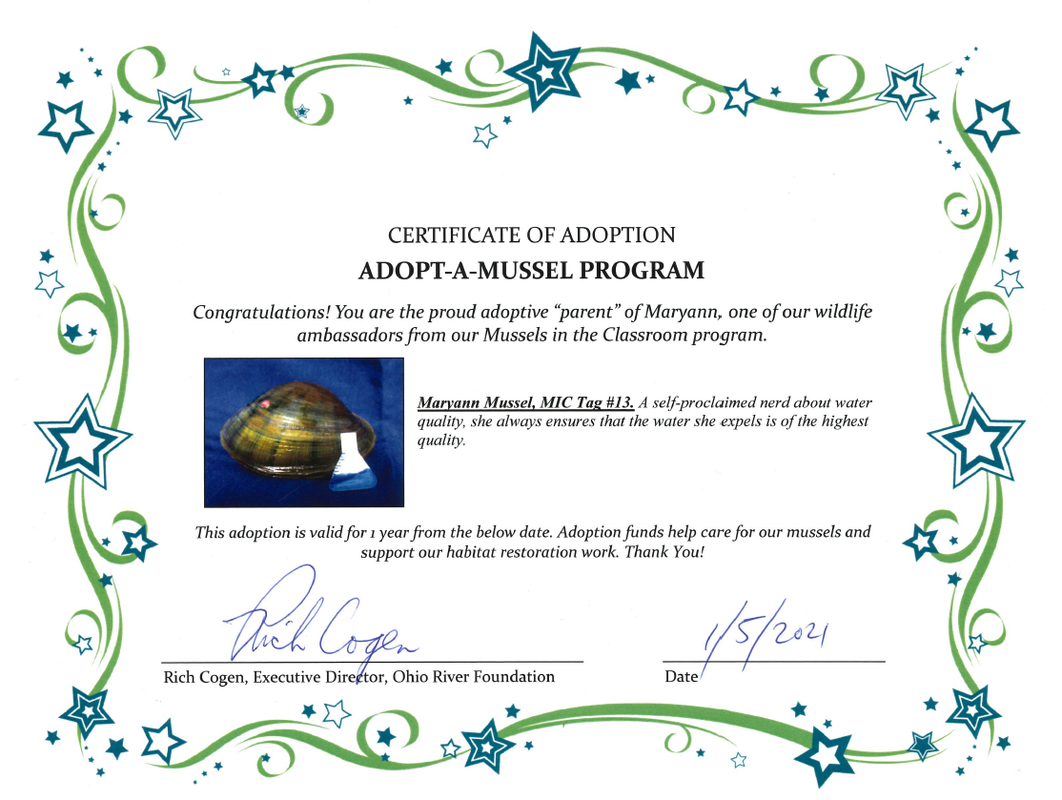|
Does the word Envirothon remind you of the word environmental? Well that's because the Envirothon is a high school environmental competition designed to stimulate, reinforce and enhance interest in the environment and natural resources among high school students. Students are tested on their knowledge of soils, forestry, wildlife, aquatic ecology and current environmental issues. In addition, the Envirothon encourages cooperative decision-making and team building. While each student on a team is challenged to contribute his or her personal best, the score that counts at the end of the competition is the team score. A team consists of five students, all from the same high school. An adult advisor (or advisors) must accompany the team, but is not permitted to assist the team during the competition.
High School students across the state compete on the local level at one of the five Area Envirothons. The top four teams from each Area Envirothon go on to compete at the state competition held each year in June for the title of State Champion. The State Champion from Ohio will compete at the NCF Envirothon held annually in North America. The 2024 Area IV competition will be held at Gwynne Conservation Area in London, OH on Tuesday, April 30. For more information about our Area IV competition visit our webpage at https://www.warrenswcd.com/hs-envirothon.html This event is a true example of many groups working together to provide a wonderful opportunity for students to learn through experience! These contests are open to any Warren County schools. If you have a school that would like to participate or learn more, please contact Warren County SWCD Education & Communications Specialist Melissa Proffitt. For more information about the overall program, visit: https://www.envirothon.org
1 Comment
In a galaxy far, far away students are returning to the classroom and educators are on the look out for excellent environmental science materials to share with them. Well educators, look no further! (Well, at least stop here for some great resources!) The National Association of Conservation Districts (NACD) has released its 2024 National Stewardship Week materials and they are out of this world. The theme revolves around the topic of forestry and these educator materials will assist in curriculum planning and support. NACD describes the materials as having "hands-on-learning and experience-based activities for K-8 grades all in a single guide with comprehensive background material, easy instructional resources, and suggestions for modification to include all students. There are also accompanying student journal resources for extending the learning experience. " And don't forget that our education staff is available to present programs and loan education materials to local Warren County educators. We have several tree-rific resources from Project Learning Tree we can share including the Tree Factory, hands-on biofacts like tree cookies, leaves and seeds, and Climate Change, Forest Change, and Tree Ring Analysis Discovery Kits. Contact us at 513.695.1337 to learn more. May the Forest Be with You!
2/28/2022 Recovering key species for ecosystem restoration- World Wildlife Day March 3, 2022Read Now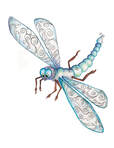 World Wildlife Day is observed on March 3rd each year to celebrate and raise awareness about the flora and fauna around the globe! The United Nations selected this date as it corresponds with the signing of the Convention on International Trade in Endangered Species of Wild Fauna and Flora (CITES) in 1973. CITES is one of the world's most powerful tools for wildlife conservation the world community has because it regulates the international trade of over 38,000 species of wild animals and plants to ensure that international trade in such species is sustainable, legal and traceable. Additionally that trade should contribute to both the livelihoods of the communities that live closest to them and to national economies for a healthy planet and the prosperity of the people in support of UN Sustainable Development Goals. This year's theme for WWD is "Recovering key species for ecosystem restoration". Each species plays a vital role in its ecosystem, and when one of those species is lost it can trigger a cascading effect. And with more and more organisms being pushed to the brink of extinction, we risk these cascades increasing. According to the International Union of Conservation of Nature's Red List of Endangered Species, over 30,000 species are endangered or vulnerable with another 8,400 species listed as critically endangered. Continued loss of these species and degradation of ecosystems is a threat to people around the world that rely on wildlife and biodiversity-based resources to meet their needs Dagmar the Dragonfly wants you to know what Ohio is doing to protect its vulnerable wildlife populations, like the 13 species of endangered dragonflies! In Ohio, the Division of Wildlife uses six categories of classification for wildlife status in the state:
By assessing and tracking these species we can take the best steps to conserve their populations and habitat to protect them from further decline. Want to know which animals are endangered in Ohio? Learn more from the US Fish and Wildlife Service and the Ohio Division of Wildlife by clicking the buttons below! Here at Warren County SWCD we are always striving to find the most engaging ways to connect with students of all ages about environmental education and conservation. And what better way to do that than with an awesome animal! Education ambassador animals help to create personal connections with people and increase the retention of information learned. Our newest education team member hopes to share enthusiasm and knowledge across Warren County about all things nature.
ABOUT TUCKER "SPEEDY" TURTLE Our newest team member is a Woodland Box Turtle (Terrapene carolina carolina a.k.a. Eastern Box Turtle) of unknown age. Woodland box turtles are native to Ohio and are very familiar and identifiable wildlife to students of all ages. Sporting red eyes and a concave plastron (belly side part of shell), our new box turtle is a male that was seized from a private owner who did not have a permit, and released to the care of Brukner Nature Center in Troy, OH. Because he had been under human care for an indeterminate amount of time, he could not be released back into the wild. Taking individual animals from the wild in an unregulated fashion negatively impacts the wild population numbers of these species which is one reason a permit is required to possess such native animals. Because Warren County SWCD holds an education permit from the Ohio Division of Wildlife, we were eligible to become a new home for this little guy. If you are a teacher or community group leader and would like to have Tucker visit your classroom or meeting with his trove of conservation knowledge, check out our program offerings on our Education Page! For questions or to schedule a program, contact Melissa Proffitt, Education & Communications Specialist, at (513) 695-3086. Caring For Our Watersheds empowers high school students to imagine, develop and create solutions in their local watersheds. CFW is both an environmental proposal contest and a project funding opportunity for high school students. The program promotes watershed awareness and stewardship, values student ideas and offers support when turning theoretical ideas into action. Caring For Our Watersheds fits in perfectly with your STEAM curricula and is very compatible with project-based learning.
Students are asked to identify an environmental concern in their local community and write a 1,000-word proposal about how they would fix the problem. Proposals are due January 14th and will be reviewed by a panel of judges to narrow down to a top 10. The top 10 students will then receive money (up to $1,000) and mentorship to implement their idea. After implementation, students will come to the final event to present their solutions to a panel of judges and win cash prizes. Schools also receive matching prize monies. For more info, please check out www.CaringForOurWatersheds.com and for specific Ohio info, go to www.CaringForOurWatersheds.com/usa/ohio. If you would like to schedule a classroom presentation about the program, please contact our Education Specialist! [email protected] Water Supports All Life! That is the message from Dagmar the Dragonfly, and she is ready to fly into your classroom or visit your event to help spread the word! Our education team is always looking to expand how we engage with audiences of all ages to teach about the importance of water quality. Check out the video for a sneak peek at what Dagmar has been up to, and contact our Education Specialist Melissa to schedule a Dagmar the Dragonfly program!
Photo credit: Max Saeling, Unsplash Each year, April 7th is recognized as International Beaver Day! There are two distinct species of beavers; the Eurasian beaver found in Europe and Asia, and the American beaver found across North America, including here in Ohio. April is when our native beavers start to emerge after several months of confinement in their lodges during the winter. These animals are well adapted to life in the water, equipped with webbed feet, a flat tail, clear "third-eyelids", and waterproof fur! Beavers are also the world’s second largest rodent. The rodent family is known for having those big front teeth. And unlike their famous "wood chuck" cousins, beavers actually put those chompers to use felling trees for food, lodge and dam construction, and to create wetlands. Wetlands are special aquatic ecosystems that work as nature's filtration system, cleaning pollutants out of the water. These traits earn the American beaver the title of nature's best engineer! Want to learn more and do a fun activity with the kids? Check out Warren County SWCD’s program Dress Like a Beaver on YouTube! The Warren County Soil and Water Conservation District has gained a new team member: Maryann the freshwater mussel. Maryann is very passionate about the water quality of her river because she is a filter feeder! If the water quality in her river is poor, Maryann will be negatively affected by a toxic diet. Freshwater mussels help keep our rivers clean, making them vital to the aquatic ecosystems in Ohio. According to the U.S. Fish and Wildlife Service, 11 freshwater mussel species have become extinct, and 46 more are struggling on the endangered species list. The Ohio river basin, encompassing 14 states and over 25 million people, is home to 41% of freshwater mussel species native to North America. Our streams and rivers empty into the basin, eventually emptying into the Mississippi River and the Gulf of Mexico. Freshwater mussels filter feed anything and everything we dump into our rivers, causing mussel species in Ohio to be disproportionately affected due to dense populations of mussel species. More specifically, the Little Miami River holds 36 species of freshwater mussels, including two threatened species. Not only are mussels threatened by water pollution, they are also fighting for resources with the invasive Zebra Mussel species. Zebra mussels are native to Eurasian freshwater bodies, but spread through dumping ballast water into the Great Lakes by ships from Europe. Zebra mussels thrived in this new environment with no natural predators, allowing them to spread rapidly across the country. Native mussel species are reducing in number due to these invasive mussels, causing a decline in overall biodiversity in our rivers. Freshwater mussels are vital for our rivers’ ecosystem filtration, but many species are declining in population due harvesting for shiny buttons, and nutrient rich sea food in the past. Human impact on the freshwater mussel population can be greatly reduced by keeping our rivers clean, helping to reverse the negative affects of previous harvesting. According to the Ohio River Foundation, our river is a source of drinking water for more than five million people. Without freshwater mussels digesting harmful bacteria such as E. coli, our rivers would become very dirty. Article written by WCSWCD Intern Abbey Raison It is incredibly important that we all do our part to prevent water pollution in our river and consume fewer mussel products to protect the native species of freshwater mussels. You can adopt a mussel just like Maryann! Visit https://secure.donationpay.org/ohioriverfdn/adopt.php to adopt the mussel of your choice, and help the Ohio River Foundation protect the freshwater mussel population. According to the Ohio River Foundation website, "The donors of the Adopt a Mussel program provide much needed funds for food, aquariums and other supplies needed to care for and house these important conservation ambassadors for our Mussels in the Classroom program." These education initiatives align with those of Warren County SWCD and we are proud to support water quality education! For questions regarding Warren County Soil and Water Conservation District programs and/or technical assistance on water or soil questions, visit http://warrenswcd.com or call, 513-695-1337.
Additional Resources:
As 2020 draws to a close, I am so proud of all of the educators across our county and state that have excelled through these unique and challenging times to continue bringing quality education to our students. Bravo! While 2021 will be a chance to continue exploring and using these new remote learning options we have all been trying to master, hopefully we will see a return to some of our in person programming as well! Until then, are you in need of some holiday STEM fun? Then check out some awesome STEM programs from Hooked on Science!
|
Details
Author:
|
|
|
Contact:PHONE: (513) 695 - 1337
EMAIL: [email protected] HOURS: Monday - Friday 7:30am - 4:00pm (except holidays) Connect:Warren County Soil & Water Conservation District Copyright © 2016
Warren SWCD Privacy Notice. Emails are serviced by Constant Contact. Constant Contact's Privacy Notice. |
